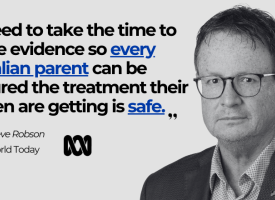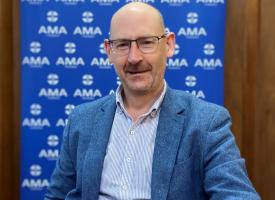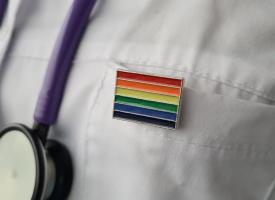Organ donation can transform lives
Increased organ donation rates could transform lives as well as save precious healthcare dollars, as organ transplants are more cost-effective than ongoing medical care, the AMA says in a new Position Statement.
“The AMA supports organ and tissue donation, and strongly encourages individuals to consider their views on donation and discuss them with their family,” AMA President, Dr Michael Gannon, said today while releasing the AMA Position Statement on Organ and Tissue Transplantation 2017.
“The holiday season, when families spend more time together, is a good opportunity to make sure that your loved ones know your wishes.
“The opportunity for organ donation is an infrequent event, and comes at an intensely emotional time for families, who will always be asked to make the final donation decision.
“The AMA thanks every organ donor for their generosity, and every donor family for making such a brave and generous decision during a very difficult time in their lives.
“Australia is a leader in organ and tissue transplantation in terms of transplant outcomes, and while donation rates are continually improving as a result of reforms introduced in 2009, there is always room for further growth.
“By increasing Australia’s rate of organ and tissue donation, more individuals and their families have the chance to benefit from life-enhancing and life-saving transplants.
“This has a positive impact on the healthcare system as transplantation of organs and tissues, such as kidneys and corneas, is cost-effective compared to the expense of providing ongoing treatment for those on waiting lists.”
The updated Position Statement, which was approved at the final meeting of the AMA Federal Council in 2017, continues to highlight issues including:
- the need for a robust ethical framework for donation and transplantation;
- public education and awareness;
- donor families;
- living donors;
- education and support for healthcare workers;
- quality and safety; and
- cultural sensitivities.
It includes a new section on transplant waiting lists, as well as a new section on umbilical cord blood banks.
It also includes expanded sections on allocation of organs and tissues, consent to transplantation, and organ trafficking, transplant commercialism, and transplant tourism.
“Public willingness to donate requires appropriate infrastructure, communication and coordination networks, and specialist staff trained to identify potential donors and support donor families,” Dr Gannon said.
“GPs also need appropriate professional education and awareness to carry out their role of raising awareness about organ donation with patients.
“The Position Statement acknowledges the debate regarding ‘opt-in’ vs ‘opt-out’ models of organ donation, but does not support one model over the other. It upholds the principle that either system must be based on free, informed donor choice involving the right to choose, as well as to refuse, to be an organ and tissue donor.
“The AMA encourages every Australian, regardless of age, to think about becoming a donor.
“Those wishing to become a donor should register their consent on the Australian Organ Donor Register at https://register.donatelife.gov.au, and tell their family about their donation wishes.
“In Australia, your family will always be asked to make the final decision, so make that very hard decision a little easier for them.”
The AMA Position Statement on Organ and Tissue Transplantation 2017 is available at https://ama.com.au/position-statement/organ-and-tissue-donation-and-transplantation-2017
Background
- About 1600 people are on the transplant waiting list at any given time.
- In 2016, 1713 people received donations from 503 deceased organ donors and 267 living organ donors.
- Deceased organ donation has more than doubled since 2009 (247 donors), and the number of organ transplant recipients has increased by 81 per cent over the same period (1447 compared to 799).
- The number of organs retrieved and transplanted from each donor has decreased from 3.8 in 2009 to 3.4 in 2016.
- Kidneys (821) are the most commonly transplanted organ, followed by the liver (314), lungs (196), heart (124), and pancreas (52).
- There were 1281 eye donors, a 1 per cent increase on 2015 (1266) and a 39 per cent increase since 2009 (922).
- In 2016, there were 7468 notified tissue transplant recipients, up 17 per cent on 2015 (6421).
(Source: Australian Donation and Transplantation Activity Report 2016)
5 January 2018
CONTACT: John Flannery 02 6270 5477 / 0419 494 761
Maria Hawthorne 02 6270 5478 / 0427 209 753
Follow the AMA Media on Twitter: http://twitter.com/ama_media
Follow the AMA President on Twitter: http://twitter.com/amapresident
Follow Australian Medicine on Twitter: https://twitter.com/amaausmed
Like the AMA on Facebook https://www.facebook.com/AustralianMedicalAssociation



